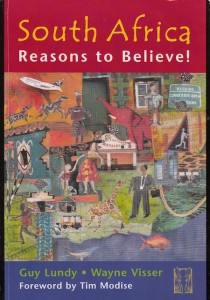Corporate Sustainability in South Africa:
A Ten Year Review
Article by Wayne Visser
What have ten years of democracy meant for the corporate sustainability agenda? This section looks back at what have been the main catalysts for change since 1994, the trends where substantial progress has been made and the key areas where companies still lag international best practice.
Catalysts for Change
Legislative Reform
The wave of legislative reform initiated by the post-apartheid government fundamentally changed the landscape of corporate sustainability. Between 1994 and 2004, approximately 60 entirely new or substantively revised statutes were introduced which had direct implications for corporate management of safety, health, environment, socio-economic development, labour, governance and ethics issues. Some of these, such as employment equity and black economic empowerment, reflected the aspirations of the ANC’s pre-election Reconstruction and Development Programme (RDP) agenda, while others, like sustainable development and corporate governance, strongly echoed international trends.
Globalisation
At the same time, South Africa’s re-entry onto the international staged forced many companies to raise their sustainability standards to meet global market expectations. As a direct result, there was a substantial increase in environmental management certification and sustainability reporting, as companies like BHP Billiton, Anglo American and Old Mutual, which became Fortune 500 companies, and SABMiller, Lonmin and Dimension Data, which became FTSE 250 companies, quickly upped their game to conform to the corporate governance requirements of the New York and London stock exchanges and the corporate sustainability requirements of various social and environmental investment indexes.
Stakeholder Activism
Newly empowered by the law and supported by international NGOs, South African civil society also became visibly more active in challenging companies on the basis of the public’s social and environmental constitutional rights. Cases in which companies became the target of such stakeholder activism included the likes of Thor Chemicals, AECI, Caltex, Iscor, WasteTech-Enviroserv, Sasol Mining, Cape plc, Gencor, Anglo American, De Beers and GlaxoSmithKline. Not surprisingly, there has been a parallel trend among companies of improved public transparency, increased stakeholder involvement and active pursuit of public-private partnerships.
Codification
Given these pressures to demonstrate their corporate sustainability, South African companies have followed the international trend of codification, i.e. adopting standards and guidelines as a form of voluntary self-regulation on social, ethical and environmental issues. The codes which have had the most impact include ISO 14001 (for environmental management), the King Code (for corporate governance) and the Global Reporting Initiative (for sustainability reporting), while the influence of other frameworks like those on social accountability (e.g. AA 1000, SA 8000) and general corporate citizenship (e.g. the Global Compact, the OECD Guidelines for Multinationals) have been more limited.
Trends
Over the last decade, corporate sustainability has steadily broadened from an initial focus on philanthropy and environmental management towards including health, safety, labour, community and broader socio-economic issues. By the time Trialogue surveyed the top companies in 2004, 100% regarded corporate citizenship (reflecting the contemporary broad definition of corporate sustainability) as a priority, with 52% giving absolute priority status and 32% high priority.
Corporate Philanthropy
Trialogue estimates that the total expenditure on corporate social investment (CSI) in South Africa …
Continue reading
[button size=”small” color=”blue” style=”download” new_window=”false” link=”http://www.waynevisser.com/wp-content/uploads/2012/07/article_sustainability_sa2004_wvisser.pdf”]Pdf[/button] Corporate Sustainability in South Africa (article)
Related websites
[button size=”small” color=”blue” style=”tick” new_window=”false” link=”http://www.csrinternational.org”]Link[/button] CSR International (website)
[button size=”small” color=”blue” style=”info” new_window=”false” link=”http://www.waynevisser.com/books/corporate-citizenship-in-africa”]Page[/button] Corporate Citizenship in Africa (book)
Cite this article
Visser, W. (2004) Corporate Sustainability in South Africa: A Ten Year Review. 2004 KPMG Survey on Integrated Sustainability Reporting in South Africa, KPMG: Johannesburg.










